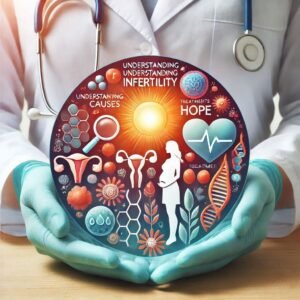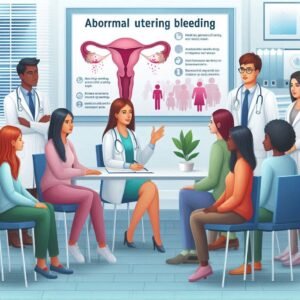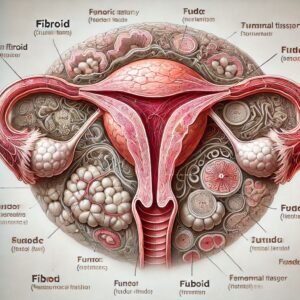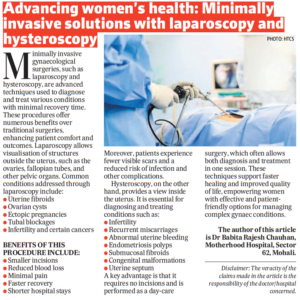
FIBROID
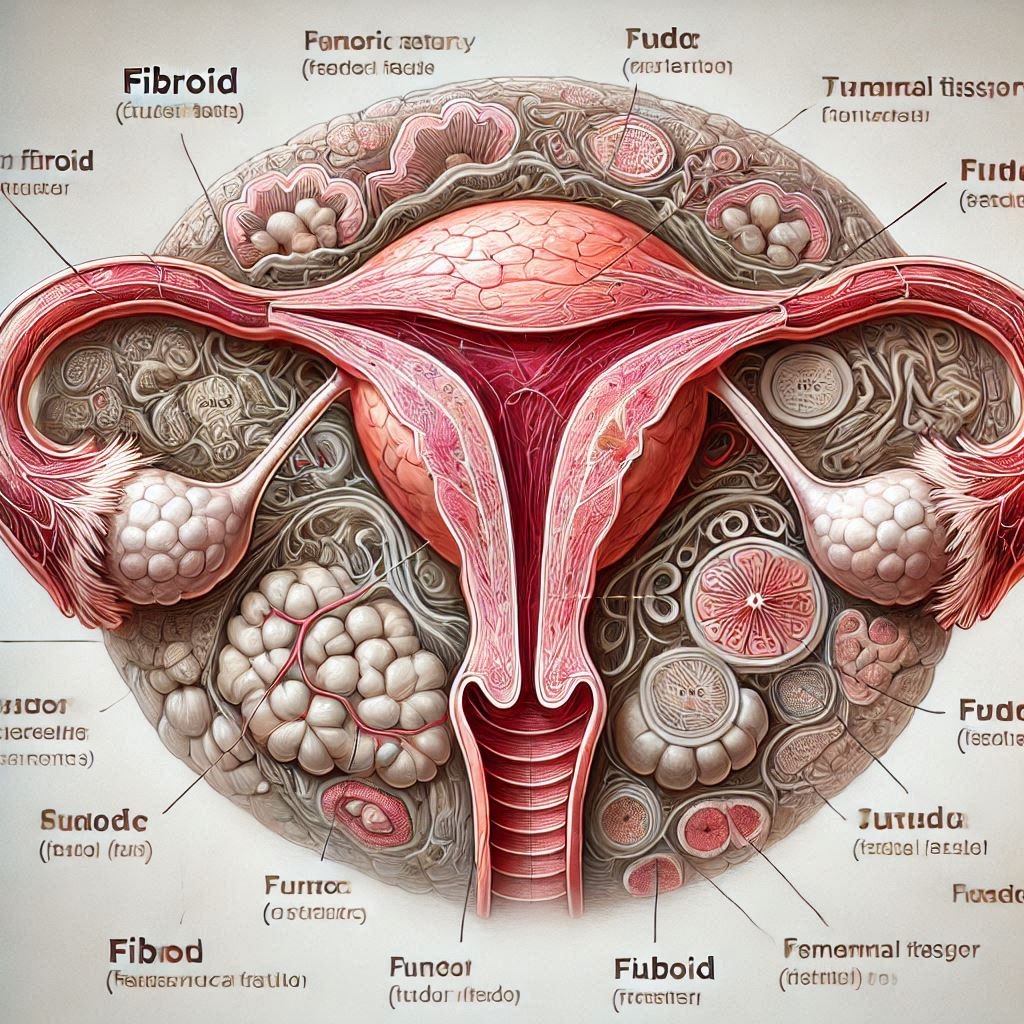
Fibroids, also known as uterine fibroids or leiomyomas, are noncancerous growths that develop in or around the uterus. They are among the most common conditions affecting women of reproductive age, yet they remain misunderstood and sometimes overlooked. While fibroids are typically benign, they can cause significant discomfort and affect a woman’s quality of life.
What Are Fibroids?
Fibroids are made of muscle and fibrous tissue and can vary in size, shape, and location. They may:
• Grow inside the uterine wall (intramural fibroids).
• Protrude into the uterine cavity (submucosal fibroids).
• Extend outside the uterus (subserosal fibroids).
• Be attached to the uterus by a thin stalk (pedunculated fibroids).
Some women may have a single fibroid, while others can develop multiple growths.
Causes of Fibroids
The exact cause of fibroids is unknown, but several factors may contribute to their development:
1.Hormonal Influence
• Estrogen and progesterone, the hormones that regulate the menstrual cycle, can stimulate fibroid growth.
2.Genetics
• A family history of fibroids increases the likelihood of developing them.
3.Age
• Fibroids are most common in women in their 30s and 40s and tend to shrink after menopause.
4.Other Risk Factors
• Being overweight or obese.
• Starting menstruation at an early age.
• Certain lifestyle factors, like high alcohol consumption or poor diet.
Symptoms of Fibroids
Not all fibroids cause symptoms, and many women may be unaware they have them. However, for those who experience symptoms, they can include:
• Heavy or Prolonged Menstrual Bleeding
• This can lead to anemia and fatigue.
• Pelvic Pain or Pressure
• Fibroids can cause a sensation of fullness or pressure in the lower abdomen.
• Frequent Urination
• Larger fibroids may press on the bladder.
• Constipation
• Fibroids pressing on the rectum can lead to bowel issues.
• Pain During Intercourse
• Depending on their location, fibroids can make sexual activity uncomfortable.
• Infertility or Pregnancy Complications
• Fibroids can sometimes interfere with conception or lead to complications during pregnancy.
How Effective Is the HPV Vaccine?
The HPV vaccine is highly effective in preventing infections from the targeted HPV types. Studies show:
• A 90% reduction in HPV infections in vaccinated populations.
• A significant decline in cervical precancerous lesions.
• A dramatic decrease in genital warts cases.
Diagnosing Fibroids
Fibroids are often discovered during routine pelvic exams or imaging tests. Diagnostic tools include:
1.Ultrasound
• The most common and non-invasive method to confirm fibroids.
2.MRI
• Provides detailed images of fibroid size, number, and location.
3.Hysteroscopy
• A small camera inserted into the uterus to examine its interior.
4.Sonohysterography
• A specialized ultrasound using saline to expand the uterine cavity for better imaging.
5.Blood Tests
• To rule out other conditions or assess anemia caused by heavy bleeding.
Treatment Options for Fibroids
Treatment depends on the severity of symptoms, size and location of the fibroids, and a woman’s age and desire to have children.
CONSULT WITH DR BABITA RAJESH CHAUHAN

